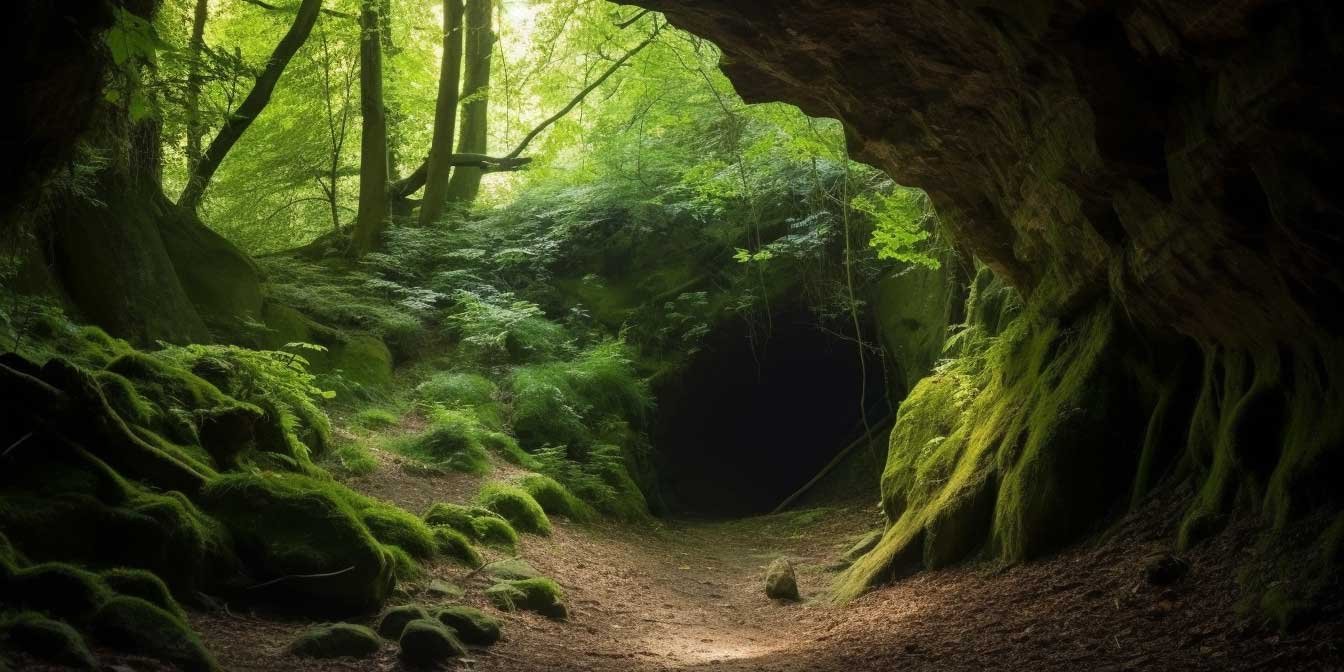Building outdoor shelters is one of the most crucial outdoor survival skills you need to learn in order to survive any disaster. In this guide, we’re going to explore various types of outdoor shelters and delve into the nitty-gritty of constructing them. Ready to become a wilderness survival expert? Let’s get started!
Understanding the Importance of Shelter
Shelter is one of the vital pillars of survival in the outdoors. It protects you from the elements, be it the scorching sun, gusting winds, torrential rain, or sub-zero temperatures. Plus, a sturdy shelter can also serve as a barrier against wildlife.
More than just physical protection, a shelter can offer much-needed psychological comfort. It gives you a sense of safety, a place to rest and regain strength, which is vital for survival.
Essential Factors to Consider When Building an Outdoor Shelter
Before we dive into constructing different types of shelters, let’s talk about some crucial factors that you need to consider.
Choosing a safe and suitable location
Choosing a safe and suitable location for your outdoor shelter is absolutely critical. Consider the proximity to resources like water and firewood, but remember that staying too close to water might attract wildlife. Keep a keen eye out for natural hazards, such as dead trees that might fall or low-lying areas prone to flooding. Look for a flat area with good drainage to avoid getting wet when it rains. And finally, think about visibility. If you want to be found, pick a spot that can be seen from the air or a distance.
Understanding weather conditions and terrain
Grasping weather conditions and terrain isn’t just helpful, it’s a survival necessity. Recognizing signs of incoming bad weather can allow crucial prep time. Familiarizing with the terrain helps in predicting possible hazards, locating resources, and choosing an optimal shelter location. Your understanding directly influences your survival chances, so never underestimate its importance.
Gathering suitable materials
Gathering suitable materials is all about resourcefulness. Use what nature provides, like branches for structure, leaves for insulation, or rocks for wind protection. Carry a lightweight tarp or survival blanket – they’re versatile and can be lifesavers. Always remember, the right materials make a world of difference in creating a sturdy, reliable shelter.
Assessing the time and effort required
When assessing time and effort required, balance speed with shelter quality. Remember, a quickly made, poor shelter can be a hazard, while an overcomplicated one can drain your energy and precious daylight. Efficiency is key in survival scenarios.
Types of Outdoor Shelters and How to Build Them
Now, let’s take a look at some common types of outdoor shelters and guide you through their construction.
Natural shelters
Natural shelters, like caves or hollow trees, can offer instant protection. They save you time and energy, but always inspect them for safety before settling in. Look out for signs of animals, insects, or potential hazards such as loose rocks or water leaks. Remember, while nature provides, it also demands caution.
Lean-to
 A lean-to is a classic wilderness shelter and a relatively easy one to construct, especially if you’ve got a trusty tarp handy. To build one, you start by locating two trees that are about as far apart as your body height. Secure a strong, horizontal support beam (a large branch or a ridgepole) between these trees at about waist height.
A lean-to is a classic wilderness shelter and a relatively easy one to construct, especially if you’ve got a trusty tarp handy. To build one, you start by locating two trees that are about as far apart as your body height. Secure a strong, horizontal support beam (a large branch or a ridgepole) between these trees at about waist height.
Next, gather some smaller branches and lean them against this ridgepole at an angle, creating a ‘wall’ of branches on one side. This ‘wall’ will be your main barrier against elements, so ensure it’s the side facing the wind.
Once your basic frame is ready, it’s time for some insulation and weatherproofing. If you have a tarp, you can attach it over your branch ‘wall.’ If you’re going all-natural, pile on debris like leaves, ferns, or grass, starting from the bottom and working your way up like shingles.
Finally, if time and materials allow, you can create a layer of insulation on the ground where you’ll be sleeping. Dry leaves, grass, or boughs can serve this purpose.
Voila! Your lean-to shelter is ready, offering protection from wind and rain. But remember, while it’s simple to construct, its effectiveness heavily relies on the quality of its build and the materials used. So, always take the time to secure and insulate it well.
A-Frame
An A-frame shelter is an excellent choice for protection against both sides, rather than just one. To start, find two trees close together or use a Y-shaped branch to support your ridgepole. Lay this long, sturdy stick across the fork, leaning it against one of the trees at an angle.
support your ridgepole. Lay this long, sturdy stick across the fork, leaning it against one of the trees at an angle.
Next, lean smaller branches against both sides of this main ridgepole, creating an ‘A’ shape. Once your frame is ready, add your insulation. Stack leaves, grass, ferns, or even snow against your frame, again, working from the bottom up to create a weather-resistant outer layer.
If you have a tarp, this can be a quick way to waterproof your A-frame. Secure it over the structure, and you’ll have a shelter ready in no time.
Remember, the A-frame shelter is typically small, just big enough for you to lie down in, which helps with warmth. For the same reason, also ensure you create some insulating bedding on the ground. It might be a bit cozy, but in a survival situation, warm and dry beats spacious any day!
Quinzhee or snow hut
 Building a Quinzhee or a snow hut requires a snowy environment, effort, and a bit of time, but it can be an incredibly warm and secure shelter if constructed correctly.
Building a Quinzhee or a snow hut requires a snowy environment, effort, and a bit of time, but it can be an incredibly warm and secure shelter if constructed correctly.
Start by piling snow into a large mound. The size depends on how big you want your shelter to be, but a good rule of thumb is to make it at least as tall as you and twice as wide. This part can be labor-intensive, but the result is worth it.
Once your mound is ready, allow the snow to ‘sinter’ or harden, which can take a few hours. This process strengthens the snow structure, making it safer and more stable.
After the mound has hardened, carve out a small entrance on one side. Then, carefully hollow out the mound, making sure to keep the walls and roof uniformly thick for structural integrity. Around one foot thickness is a good target.
The finished interior should be dome-shaped to prevent any potential collapse. Finally, you can plug the entrance with packed snow or a snow block when you are inside, preserving heat and keeping the wind out.
A Quinzhee can keep you surprisingly warm, even in harsh winter conditions. The snow serves as an excellent insulator, and your body heat can raise the inside temperature significantly. So, if you’re stuck in a winter wonderland, a Quinzhee might be your best bet!
Tarp shelters
Tarp shelters are incredibly versatile and can be set up in various ways, such as a lean-to, A-frame, or a simple canopy. They’re lightweight and compact, making them an excellent addition to any survival kit. The waterproof material offers protection against rain and can also provide shade in sunny conditions. However, a tarp shelter alone won’t provide much insulation, so pair it with a quality sleeping bag or blanket in colder climates.
Choosing the Right Materials When Building Outdoor Shelters
The materials for your shelter primarily depend on what’s available around you. Nature provides an array of options: branches, leaves, bark, and of course, snow. On the other hand, modern survival tools like tarps, paracord, and survival blankets can be game-changers, provided you have them in your backpack.
Maintaining Your Outdoor Shelter
Even after setting it up, your work isn’t over. Regular checkups for stability are essential. Reinforce your shelter as needed and ensure it continues to provide protection against the elements.
Building a Shelter for Different Weather Conditions
Weather conditions have a significant impact on your shelter construction. A snow hut wouldn’t be of much use in a tropical rainforest, would it? In snowy environments, focus on insulation. The Quinzhee or a snow cave can help conserve heat.
When dealing with rain, build a shelter that’s not only waterproof but also raised off the ground to avoid flooding. A lean-to with a well-secured tarp or a debris hut could do the trick here.
In hot, dry environments, shade becomes your priority. Building a shelter with enough ventilation like a tarp canopy can protect against the sun while allowing the breeze to cool you down.
Common Mistakes to Avoid When Building an Outdoor Shelter
To increase your chances of survival, here are some pitfalls to avoid:
Ignoring the location
Even the sturdiest shelter is useless if it’s prone to flooding, falling branches, or strong winds. Always choose a safe location.
Underestimating the weather
The weather can change quickly in the wilderness. Build your shelter with a worst-case scenario in mind.
Using unsuitable materials
A shelter made of weak or flimsy materials won’t provide much protection. Use strong, durable materials that can withstand the elements.
Not testing the shelter’s stability
Always test your shelter’s stability before settling in for the night. A small effort can prevent a major disaster.
Wrapping it up
Mastering the art of building a shelter can drastically increase your survival chances in the wilderness. So, remember these tips and techniques and make sure to practice them before you venture out. After all, being prepared is the best survival strategy!
Have you built a shelter in the outdoors before? Do you have a go-to design or any tips to share? We’d love to hear your experiences! Don’t forget to like, share, and comment on this article. And if you want more outdoor survival skills, be sure to subscribe!
FAQs
- What’s the easiest shelter to build in the wilderness?
- A lean-to shelter is arguably one of the simplest and fastest to build. It provides good protection against wind and rain, especially when lined with leaves or covered with a tarp.
- Can a tarp shelter keep me warm?
- A tarp shelter can protect against wind and rain, but it won’t provide much insulation. Pair it with a good sleeping bag or a survival blanket to retain heat.
- Is it legal to build a shelter in the woods?
- This depends on the location. In some public lands or national parks, it might be illegal or against the park rules. Always check local regulations before building a shelter.
- How long does it take to build a shelter?
- The time can vary greatly depending on the type of shelter, materials available, and your skill level. A simple lean-to could take an hour or two, while a more substantial shelter like a Quinzhee could take half a day.
